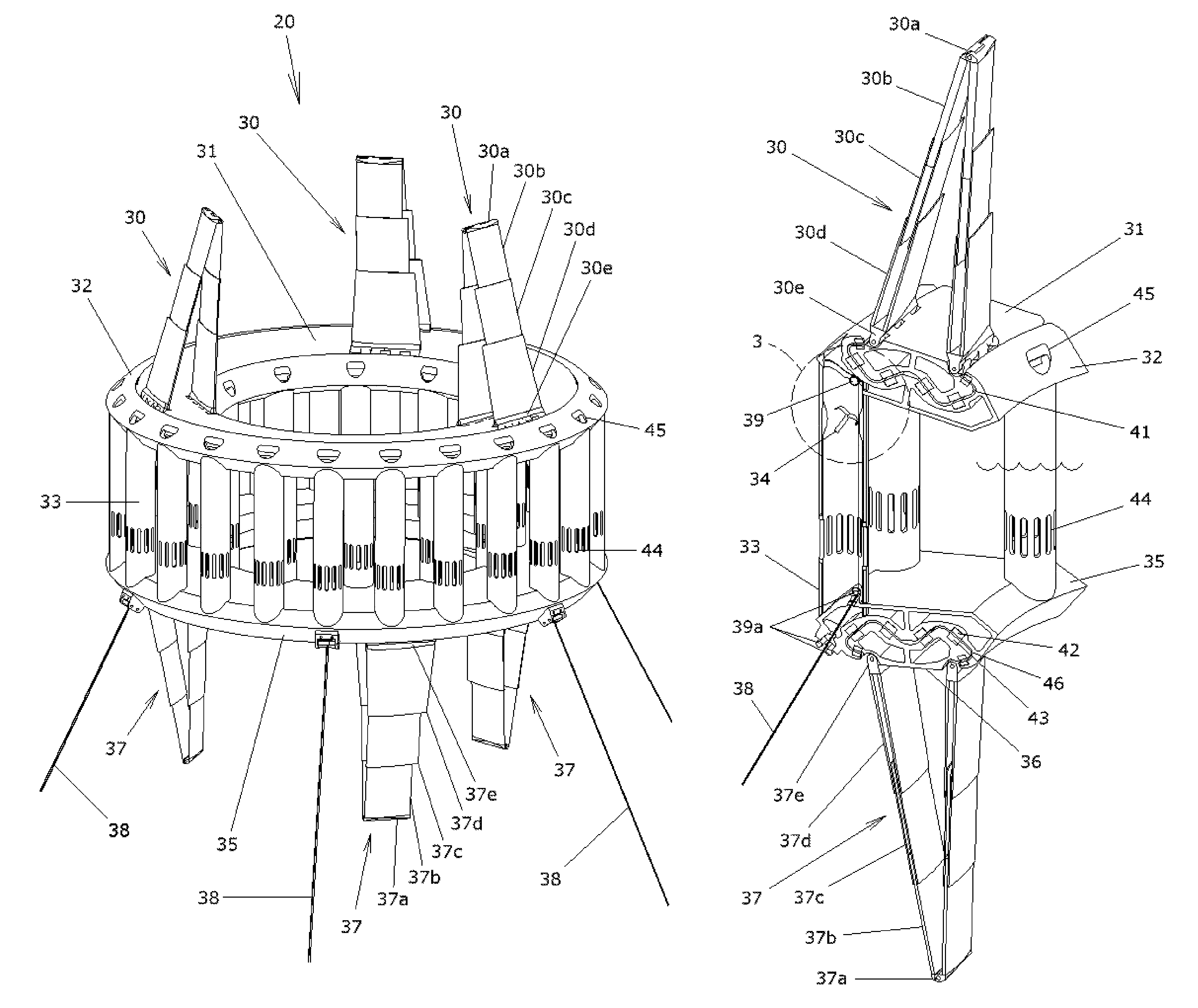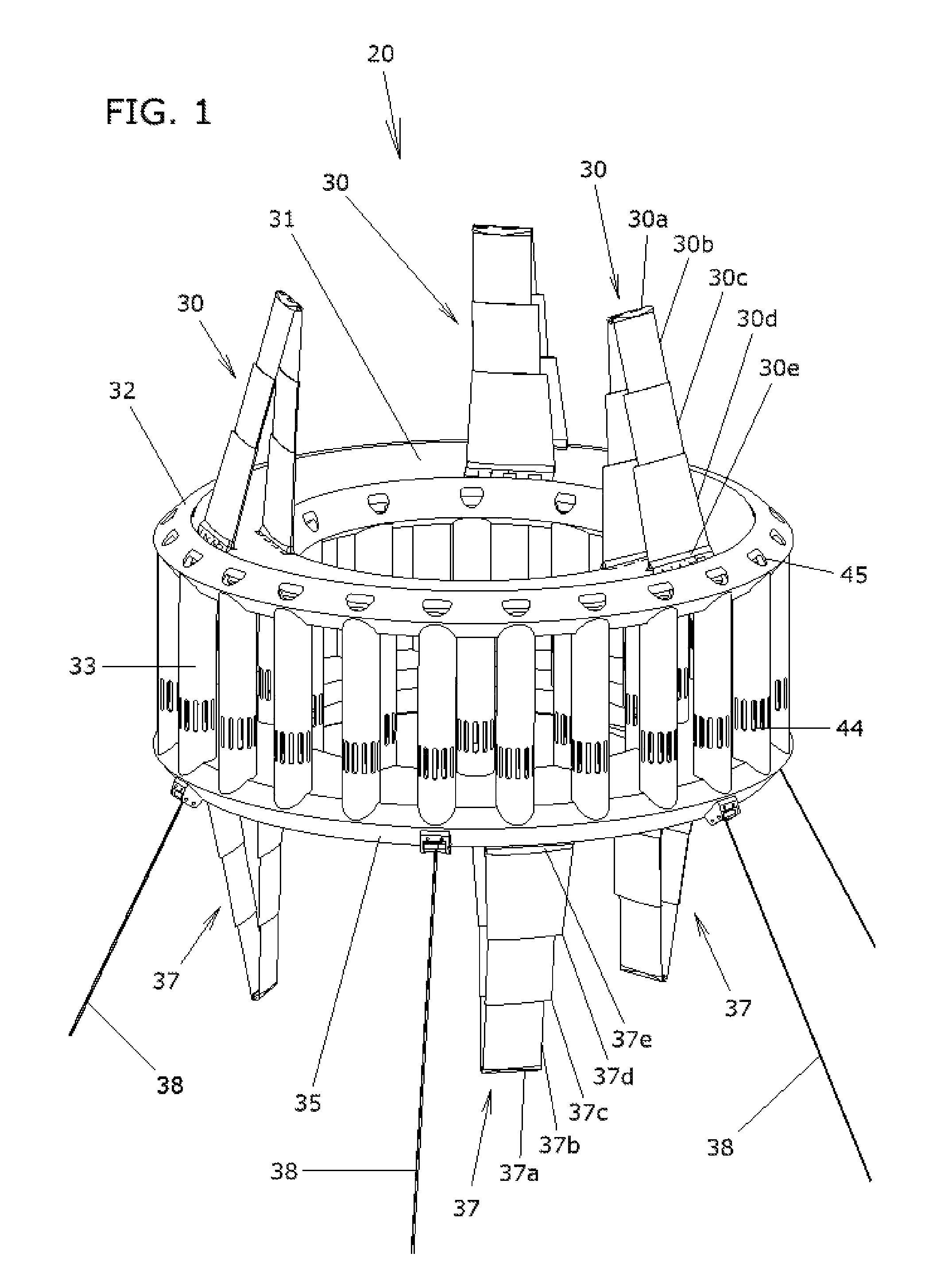Marine energy hybrid
a hybrid energy and marine technology, applied in the direction of wind motors with solar radiation, electric generator control, machines/engines, etc., can solve the problems of eliciting considerable social resistance, presenting a particularly acute challenge, and limited land area for land-based wind farms
- Summary
- Abstract
- Description
- Claims
- Application Information
AI Technical Summary
Benefits of technology
Problems solved by technology
Method used
Image
Examples
Embodiment Construction
[0044]The presently preferred embodiment of the invention will be best understood by reference to the drawings, wherein like parts are designated with like numerals throughout.
[0045]With reference to FIGS. 1, 2 and 3, a marine energy hybrid device or system 20 of the present invention is illustrated. Marine energy hybrid device 20 includes a central, non-rotatable or fixed member or ring 32 with an upper rotatable carriage element 31 rotatably mounted at an upper track assembly 41 of fixed member 32 and a lower rotatable carriage element 36 rotatably mounted at a lower track assembly 46 of a lower fixed member or ring 35. At least one vane assembly 30 is mounted to and extends upwardly from upper carriage element 31 for rotating upper carriage element 31 relative to fixed member 32 in response to the wind stream, while at least one vane assembly 37 is mounted to and extends downwardly from the lower carriage element 36 for rotating lower carriage element 36 relative to fixed member ...
PUM
 Login to View More
Login to View More Abstract
Description
Claims
Application Information
 Login to View More
Login to View More - R&D
- Intellectual Property
- Life Sciences
- Materials
- Tech Scout
- Unparalleled Data Quality
- Higher Quality Content
- 60% Fewer Hallucinations
Browse by: Latest US Patents, China's latest patents, Technical Efficacy Thesaurus, Application Domain, Technology Topic, Popular Technical Reports.
© 2025 PatSnap. All rights reserved.Legal|Privacy policy|Modern Slavery Act Transparency Statement|Sitemap|About US| Contact US: help@patsnap.com



